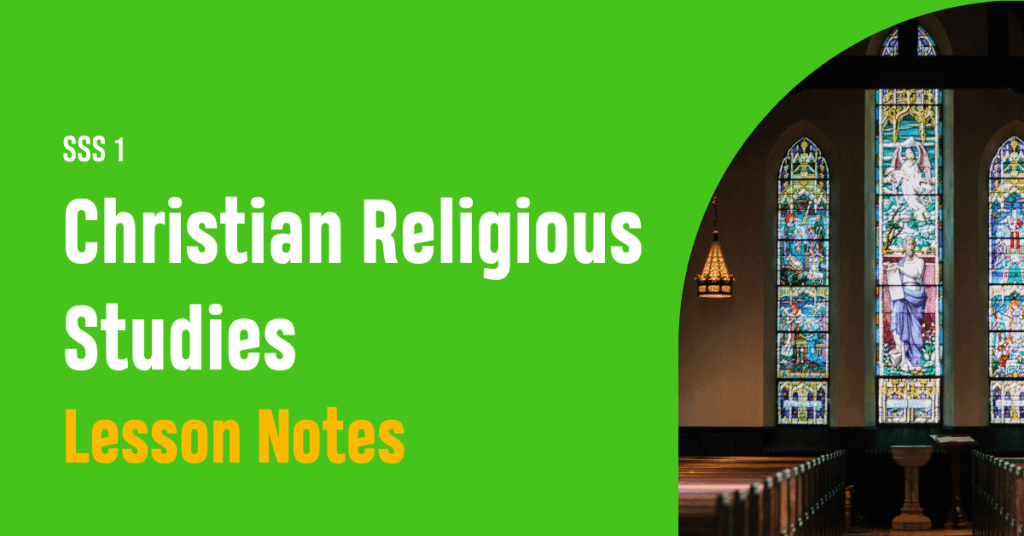SSS1 Geography of Work
Download the Senior Secondary School 1 (SS1) Unified Scheme of Work for Geography to serve as a guide for educators

Home » SSS1 Scheme of Work » SSS1 Geography Scheme of Work
Home » SSS1 Scheme of Work » SSS1 Geography Scheme of WorkAbout SS1 Geography Scheme of Work
Geography as a subject encompasses the study of the Earth’s landscapes, environments, and the interactions between people and their surroundings. It is typically divided into two main branches: physical geography and human geography.
Physical Geography focuses on the natural environment, including the study of landforms, climate, vegetation, water bodies, soils, and natural phenomena. It investigates how physical processes such as weather, tectonic activity, and erosion shape the Earth’s surface. On the other hand, Human Geography examines the relationships between people and their environments. It covers topics such as cultural landscapes, urban development, population distribution, economic activities, and the impact of human activities on the environment.
Geography in SSS1 (Senior Secondary School 1) lays a crucial foundation for students beginning their exploration of the world’s physical and human landscapes. The unified scheme of work includes various topics, such as physical geography, which explores landforms, climates, and ecosystems, and human geography, which looks at population dynamics, urbanization, and economic activities.
By studying Geography in Senior Secondary School 1 using the Lagos state unified scheme of work, students understand the complex connections between natural environments and human societies, preparing them for more advanced geographical studies in the future.
Assessment Guide
In senior secondary school 1, students are assessed in Geography based on the school’s prerogative. However, typically, they are evaluated through tests or quizzes (Continuous Assessment Tests) and end-of-term exams.
Grading follows a scale from A to F, with A representing excellent performance, typically scoring around 70% or 80%, and F indicating failure, usually below 50% or 45%.
Download SSS1 Geography Scheme of Work

Know what’s expected of you as an educator
Download the Unified Scheme of Work for Senior Secondary School One (SSS1) Geography
Get SSS1 Geography Lesson Notes

Never bother about writing lesson notes again. Get our well written SSS 1 Geography lesson notes for (First, Second & Third Term).
Its’s printable, in PDF Format, editable, and easy to use.
SS1 First Term Scheme of Work for Geography
| LAGOS STATE MINISTRY OF EDUCATION: UNIFIED SCHEMES OF WORK FOR SENIOR SECONDARY SCHOOLS | ||
| Geography Scheme of Work for Senior Secondary Schools 1(SSS1) | ||
| Class | S.S.S 1 | |
| Subject | Geography | |
| Term | First Term | |
| Week | Topic | Breakdown |
| 1 | Geography (a) Meaning and importance (b) The Earth and other plants | 1. Meaning of Geography. 2. Value of the study of geography. 3. Components of the solar system e.g. Mercury, Venus, Mars etc. 4. The Earth:-size-shape-position in relation to the sun and other planets. |
| 2 | Earth’s Rotation | 1. Meaning of rotation 2. Effects of rotation-day and night-deflation of word-rise and fall of tide-time differences from place to place-axis |
| 3 | Earth’s revolution | 1. Meaning of resolution. 2. Effects of resolution:-season-marking of the year-variation in the length of day and night-equinoxes-solstice-orbit |
| 4 | Latitude | Latitude:-meaning of latitude-equator.-latitude and distances-relationshipwith major regions of the world (tropic of cancer and cap acorn, arctic and Antarctic circles). |
| 5 | Longitude | Longitude:-meaning-time and time zones-international dateline-grid references |
| 6 | Earth’s structure | 1. Major spheres of the earth: -atmosphere-biosphere-lithosphere-hydrosphere 2. Relationship between the three spheres. 3. Relevance to human activities. 4. Structure of the earth:-crust-mantle-core |
| 7 | Rocks | 1. Types of rocks:-igneous-sedimentary-metamorphic 2. Characteristics of rocks:-structure-colour-texture-permeability 3. Mode of formation of the rock types. 4. Importance of rocks to man. |
| 8 | Mountains | Types of Mountains:-volcanic-fold-block-residual 2. Characteristics of the mountain. 3. Mode of formation of the mountain types. 4. Importance of mountains:-mineral-agriculture-communication-climatic effect-etc. |
| 9 | Lowlands | 1. Types of lowlands:-valleys-coastal-plans etc. 2. Characteristics of:-valleys-plans-coastal areas 3. Mode of formation of the lowlands. 4. Importance of lowlands. |
| 10 | The Environment | 1. Meaning of environment. 2. Types of environment:-physical-social-cultural 3. Domains of the environment:-atmosphere-lithosphere-biosphere-hydrosphere 4. Importance of the environment. |
| 11 | Revision | |
| 12 | Examination | |
SS1 Second Term Scheme of Work for Geography
| Term | Second Term | |
| Week | Topic | Breakdown |
| 1 | Nigeria Location and position | 1. Location and position:-latitude-longitude-boundaries and neighbours 2. Size and distance-North to South-East to West 3. Political divisions 4. States and their capitals. 5. Local Government and their headquarters |
| 2 | Physical setting of Nigeria Relief and drainage | 1. Major highlands-North-central/plateau-Eastern and North-Eastern highlands-Western uplands 2. Major lowlands -Sokoto plains -Chad basin -Niger-Benue Trough -Interior coastal lowlands -Lowlands and scarplands of Nigeria -Coastal lowlands |
| 3&4 | Nigeria-Climate | 1. Air masses of Nigeria.-Tropical continental air mass (N.E. trades).-Tropical maritime air mass (S.W. monsoon) 2. Climatic belts-Tropical continental-Tropical hinterland-Sub-equatorial-High plateau (Mantane). 3. Characteristics of climatic elements in each belt. |
| 5 | Nigeria Vegetation | 1. Broad classification A. Forest vegetation-Salt-water (mangrove)-Fresh–water swamp-High (Rain) forest B. Savannah-Guinea savannah-Sudan savannah-Sahel savannah 2. Characteristics of each vegetation belt 3. Importance of (a) Savannah (b) Forest vegetation. |
| 6 | Nigeria-Population | 1. Population size distribution and structure. 2. Population quality. 3. Population movement. 4. Population data. |
| 7&8 | Nigeria-Resources | 1. Mineral Resources-Petroleum-Gas-Coal-Tin/Columbite-Iron ore-Limestone 2. Power-Petroleum-Gas-Coal-Hydro Electric Power (HEP)-Solar energy 3. Water resources (rivers, lakes, sea, underground water). 4. Vegetation |
| 9&10 | Nigeria-Agriculture | 1. Types of Agricultural practices:-subsistence-mechanized-pastoral farming-crop rotation-mixed farming-shifting cultivation 2. Food and cash crops. 3. Importance of Agriculture. 4. Problems of agriculture in Nigeria. |
| 11 | Revision | |
| 12 | Examination |
Download SSS1 Geography Scheme of Work

Know what’s expected of you as an educator
Download the Unified Scheme of Work for Senior Secondary School One (SSS1) Geography
SS1 Third Term Scheme of Work for Geography
| Term | Third Term | |
| Week | Topic | Breakdown |
| 1&2 | Nigeria-Transport | 1. Transportation (a) Modes of transportation:-road-rail-water-air-pipeline-aerial ropeway-human and animal portage. (b) Advantages and disadvantages of the different transportation modes. (c)Problems of transportation (d) Influence of transportation on human activities |
| 3 | Nigeria-Communication | Communication in Nigeria (a) Communication networks-Telecommunication (e.g. telephone, services, cellular phones, voice mails etc)-Postal services-Television-Radio-News paper-Internet etc. (b) Advantages and disadvantages of the different communication elements/network (c) Problems of communication in Nigeria (d) Importance of communication on human activities. |
| 4 | Manufacturing industries in Nigeria | 1. Definition of industry. 2. Types of industries-Primary-Secondary-Tertiary-Quaternary 3. Major industrial zones. 4. Factors affecting the location of industries. 5. Problems and solutions. 6. Importance of manufacturing industries in Nigeria |
| 5 | Nigeria Commercial Activities | 1. Major commercial activities (a) Trade-Local-national, international-Stock exchange-Capital market-FOREX (b) Transportation (c) Communication 2. Major commercial areas in Nigeria 3. Importance of commercial activities |
| 6 | ECOWAS | 1. Meaning of ECOWAS. 2. Member countries 3. Purpose/mandate of ECOWAS. 4. Advantages and disadvantages. 5. Solutions to the ECOWAS problem. |
| 7 | Map Reading and Measurement of distances on maps | 1. Maps-Definition-Types-Examples-Uses 2. Scales and Conversion-Types-Attributes-merits and demerits of each type 3. Scale conversion 4. Measurements and units 5. Conversion -Conversion of map distance to actual distance -Conversion of actual distance to map distance |
| 8 | Conventional symbols direction and bearing | 1. Acceptable symbols for feature representative. 2. The major cardinal points:-true north and magnetic north.-magnetic variation 3. Angular bearings and compass direction. |
| 9 | Basic concepts of GIS | 1. Geographic Information System (GIS). 2. Geographic date: -meaning/examples -line for rivers, roads, rails, etc. -points for boreholes, towns, farms, etc. -sources (maps, fieldwork, satellite images, etc). 3. importance of georeferencing, geographic data and theGIS. |
| 10 | Components of GIS | 1. Hardware components:-digitizer-Global Positioning System(GPS)-computer-printer-scanner etc 2. Software for:-data input-storage-retrieval-manipulation 3. Data:-positional-relational 4. Procedures; set of rules. 5. People experts. |
| 11 | Revision | |
| 12 | Examination |
Get SSS1 Geography Lesson Notes

Never bother about writing lesson notes again. Get our well written SSS 1 Geography lesson notes for (First, Second & Third Term).
Its’s printable, in PDF Format, editable, and easy to use.
Recommended Geography Textbooks for Senior Secondary School 1
The recommended Geography textbooks for SSS1 include but are not limited to the following:
- Senior Secondary Geography by S.A. Emielu
Geographical Bureau Nig. Ltd
- Learning Solutions Senior Secondary Atlas by Learning Solutions
Learning Solutions
- Comprehensive Cert Geography by K. Ahmed, O Areora et al
University Press Plc SS 1- 3
- A New Geography of Nigeria (New Education) by Iloeje, N.P.
- Certificate Physical and Human Geography for Senior Secondary School (West African Edition) by Adeleke, B.O., Leong, G.C
Ibadan: Oxford.
- A Practical Approach to Map Reading for WAEC C. by A Aso
Spectrum Books Ltd SS 1- 3





























